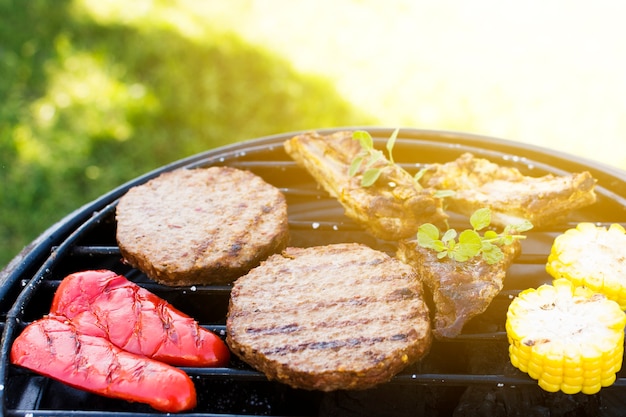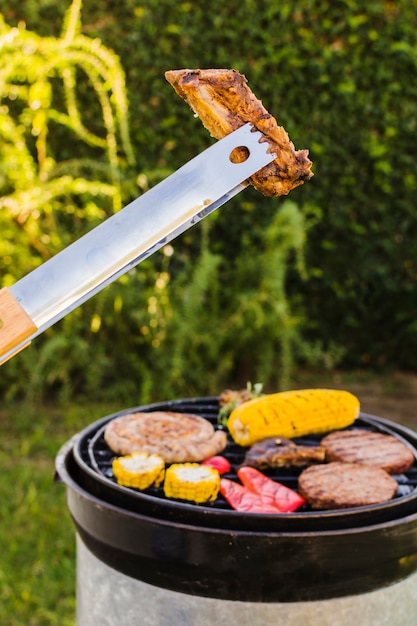How do you make burgers not boring?
In the UK, burgers have become a staple in many households and restaurants. However, it’s easy for this beloved dish to become monotonous if we stick to the same old recipes and toppings. So, how can we make burgers more exciting and delicious? Let’s explore some creative ideas to elevate your burger game and bring a new level of enjoyment to your dining experience.
Experiment with Flavors and Ingredients
One way to make burgers more interesting is by experimenting with flavors and ingredients. Instead of using traditional beef patties, try mixing in spices, herbs, or even vegetables to add depth and complexity to the taste. Consider using alternative meats like lamb, chicken, or turkey for a different texture and flavor profile. You can also opt for veggie or vegan patties made from ingredients like mushrooms, beans, or quinoa for a healthier twist.
“Adding unexpected ingredients to your burger can completely transform its taste.”
Get Creative with Toppings and Sauces
Toppings and sauces play a crucial role in enhancing the flavor of a burger. Instead of the usual ketchup and mustard, try experimenting with unique condiments like sriracha mayo, chipotle aioli, or homemade BBQ sauce. Don’t be afraid to layer on different textures and flavors with toppings like caramelized onions, grilled pineapple, avocado slices, or even fried eggs. The key is to strike a balance between sweet, savory, tangy, and spicy elements to create a harmonious medley of flavors.
Consider Unique Bun Choices
While the bun may seem like a mundane part of the burger, choosing an interesting alternative can greatly enhance the overall taste experience. Try swapping the traditional sesame seed bun with brioche, pretzel, or even lightly toasted ciabatta for a different texture and flavor. You can also explore gluten-free options or opt for lettuce wraps for a low-carb alternative.
Think Beyond Traditional Combinations
Traditionally, burgers are paired with classic toppings like cheese, lettuce, tomato, and pickles. While there’s nothing wrong with these combinations, thinking outside the box can take your burger to a whole new level. Experiment with international flavors by incorporating ingredients such as feta cheese, tzatziki sauce, guacamole, or kimchi. Fusion burgers that combine elements from different cuisines, such as a teriyaki burger with grilled pineapple or a Mediterranean-inspired lamb burger with tzatziki, can also add an exciting twist.
Explore Different Cooking Techniques
The cooking technique you choose can greatly impact the taste and texture of your burger. While grilling is the most popular method, consider trying alternatives like pan-frying, baking, or even sous vide cooking. Each technique offers unique benefits and can result in different flavors and levels of juiciness. Don’t be afraid to experiment and find the cooking method that best suits your preferences.
In Conclusion
“By experimenting with flavors, toppings, sauces, buns, and cooking techniques, you can transform a regular burger into a culinary delight.”
Making burgers more exciting goes beyond just the taste; it also involves creativity and a willingness to try new combinations. So, break away from the ordinary and embrace the world of possibilities that lie within the realm of burger creation. Whether you’re hosting a barbecue, enjoying a homemade meal, or dining out, let your burger shine with unique flavors and enticing ingredients that will leave your taste buds craving for more.
What is the best burger mix ratio?
Introduction
When it comes to making burgers at home, finding the perfect meat-to-fat ratio is essential for achieving that juicy and flavorful patty. The right mix of meat and fat ensures a balance between tenderness and flavor, giving you the best burger experience possible. In this article, we will explore various burger mix ratios and help you determine the best one for your taste.
Understanding the Meat-to-Fat Ratio
The meat-to-fat ratio refers to the proportion of lean meat (usually beef) to fat in your burger mixture. While lean meat provides texture and protein, fat contributes to moisture and flavor. A higher fat content generally results in a juicier and more flavorful burger, but it’s important to find the right balance to avoid a greasy or heavy patty.
Finding Your Perfect Ratio
The ideal burger mix ratio depends on personal preference and the type of burger you want to create. Here are a few common ratios to consider:
70% Lean Meat : 30% Fat – This ratio is often recommended for classic burgers, providing a good balance between flavor and juiciness.
80% Lean Meat : 20% Fat – A slightly leaner ratio, perfect for those who prefer a lighter burger with less fat content.
50% Lean Meat : 50% Fat – Sometimes used for ultra-juicy and decadent burgers, this ratio is for those who love a rich and indulgent patty.
Tips for the Best Results
While the meat-to-fat ratio is crucial, there are a few additional tips to consider:
- Choose high-quality meat, preferably freshly ground, for the best flavor and texture.
- Season your burger mixture well with salt, pepper, and any other desired spices or herbs.
- Handle the mixture gently when forming patties to prevent them from becoming tough.
- Cook the burgers to your preferred level of doneness, ensuring they reach a safe internal temperature.
Should Burgers be Medium or Well-Done?
When it comes to the perfect burger, one of the biggest debates among food enthusiasts is whether it should be cooked medium or well-done. Everyone has their own preference, but there are a few factors to consider when deciding how you like your burger cooked.
Taste and Juiciness
The level of doneness directly affects the taste and juiciness of a burger. A medium-cooked burger will have a pink center, which can bring out the natural flavors of the meat and add a juicy texture. On the other hand, a well-done burger is cooked all the way through, resulting in a drier texture but with a more charred and intense flavor.
For those who prefer a juicy and flavorful experience, medium burgers are the way to go. The slightly undercooked center allows the meat to retain its moisture and tenderness, making every bite a delightful treat.
Food Safety Concerns
When it comes to food safety, it is generally recommended to cook ground meat thoroughly to kill any harmful bacteria. This is why many health authorities advise cooking burgers until they reach an internal temperature of 160°F (71°C).
Well-done burgers eliminate any potential risks associated with undercooked meat, making them a safer choice. However, by using high-quality meat and following proper hygiene practices, the risk of contamination can be minimized even when cooking burgers to medium.
Texture and Personal Preference
The texture of a burger can vary greatly depending on the level of doneness. Medium burgers provide a good balance between tenderness and a slight firmness, while well-done burgers are firmer and often have a bit of char on the outside.
“I personally love a medium burger, as it maintains the juiciness of the meat while also having a bit of a charred crust.” – Burger enthusiast
Ultimately, the choice between medium or well-done comes down to personal preference. Some people enjoy the tenderness and juiciness of medium burgers, while others prefer the texture and safety of well-done burgers. It’s important to find what works best for you and to ensure proper cooking practices to guarantee a safe and enjoyable burger-eating experience.
Why do my burgers always shrink?
Have you ever experienced the disappointment of cooking a delicious-looking burger, only to find that it has shrunk to half its original size? This common kitchen conundrum can be frustrating, but fear not! We’re here to explain why your burgers shrink and offer some tips to help prevent it from happening.
What causes burger shrinkage?
There are a few factors that contribute to burger shrinkage:
- Moisture loss: As the burger cooks, it releases moisture. This moisture evaporates, causing the meat to shrink in size.
- Fat rendering: Fat is released from the meat as it cooks and drips away. This loss of fat contributes to shrinkage.
- Different cooking methods: Grilling or frying burgers can cause them to shrink more compared to oven-baking, as the direct heat quickly dehydrates the meat.
Preventing burger shrinkage
While some shrinkage is inevitable, there are steps you can take to minimize it:
- Choose fattier meat: Leaner meats tend to shrink more due to their lower fat content. Opt for ground beef with a higher fat percentage (e.g., 80/20) for juicier and less-shrinking burgers.
- Handle the meat gently: Overworking the burger mixture can lead to a denser patty, which is more prone to shrinking. Use a gentle touch when shaping your burgers.
- Create an indentation in the center: Pressing a slight indentation in the middle of each patty helps counteract shrinkage, as it prevents the burger from puffing up in the middle.
- Rest before cooking: Allow your formed patties to rest in the refrigerator for at least 30 minutes before cooking. This helps them retain their shape and reduces shrinkage.
“The key to preventing burger shrinkage lies in choosing the right meat, handling it gently, and employing techniques such as creating an indentation and resting the patties.”
By understanding the reasons behind burger shrinkage and implementing these tips, you’ll be well on your way to enjoying perfectly cooked, juicy burgers every time. Happy grilling!
How do you keep burgers thin and flat?
Burgers are a staple in the UK, and whether you’re grilling them at a summer barbecue or enjoying them at a local pub, there’s nothing quite like a juicy, flavourful burger. However, one challenge many home cooks face is keeping their burgers thin and flat while cooking.
Why keep burgers thin and flat?
There are several reasons why you might want to keep your burgers thin and flat:
- Even cooking: A thinner patty cooks more evenly, ensuring that the centre is cooked to the desired doneness without overcooking the exterior.
- Quick cooking: Thinner patties cook faster, making them ideal for weeknight meals or when you’re short on time.
- Better topping distribution: Thin burgers provide a better ratio of meat to toppings, allowing each bite to have a perfect balance of flavours.
Tips for keeping burgers thin and flat:
To achieve thin and flat burgers, try these tips:
- Use the right ground meat: Choose lean ground beef with a lower fat content, as it will shrink less and help maintain the shape of your burgers.
- Avoid overmixing: When forming the patties, gently handle the meat and avoid overmixing, as it can result in dense and thick burgers.
- Press a dent in the center: Before cooking, press a small indentation in the center of each patty with your thumb. This will prevent the burgers from puffing up in the middle during cooking.
- Cook on a hot grill or pan: Preheat your grill or pan on high heat before adding the burgers. This will help sear the outside quickly, locking in the juices and preventing them from bulging.
A thin and flat burger allows for optimal cooking and a great balance of flavors.
Keeping your burgers thin and flat not only enhances their taste and texture but also ensures that they cook evenly. By following these simple tips, you’ll be on your way to creating delicious, restaurant-style burgers in the comfort of your own home.
What does soaking beef in milk do?
Introduction
Soaking beef in milk is a cooking technique that has been used for centuries. While it might seem unusual, many cooks swear by this method to tenderize and enhance the flavor of certain cuts of beef. In this article, we will explore the science behind soaking beef in milk and how it can transform your dishes.
The Science Behind It
Soaking beef in milk helps break down enzymes and proteins in the meat, resulting in a more tender texture. The acidity in milk, particularly lactic acid, acts as a natural meat tenderizer. This process is similar to marinating meat in acidic ingredients like vinegar or citrus juices.
Benefits of Soaking Beef in Milk
Tenderizes the meat: The enzymes and acids in milk help break down tough muscle fibers, resulting in a more succulent and tender piece of beef.
Enhances flavor: Soaking beef in milk can impart a subtle sweetness and richness to the meat, enhancing its natural flavor.
How to Soak Beef in Milk
To soak beef in milk, simply place the desired cut of meat in a bowl and pour enough milk to cover it completely. Let it sit in the refrigerator for at least 30 minutes to overnight. Once soaked, rinse the beef under cold water to remove any excess milk before cooking.
Recipes to Try
If you’re curious to try this technique, here are some delicious recipes to get you started:
- Milk-Braised Pot Roast: Slow-cook a beef roast in a mixture of milk and spices for a melt-in-your-mouth tender result.
- Milk-Marinated Steak: Marinate your favorite steak in milk before grilling or pan-searing to elevate its flavor and tenderness.
“Soaking beef in milk is an old trick that my grandmother taught me. It really does make a difference in the texture and taste of the meat.” – Sarah, avid home cook
Conclusion
The best burger mix ratio ultimately depends on your personal taste preferences. Experimenting with different ratios can help you discover your ideal combination of meat and fat for the juiciest, most flavorful burgers. Remember to adjust cooking times accordingly based on the fat content. Whether you prefer a classic 70:30 ratio or something more indulgent, with the right mixture, you’ll be on your way to burger perfection!
Soaking beef in milk can be a game-changer when it comes to tenderizing and enhancing the flavor of certain cuts of beef. Give it a try and experience the delicious results for yourself!



